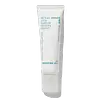What's inside
What's inside
 Key Ingredients
Key Ingredients

 Benefits
Benefits

 Concerns
Concerns

 Ingredients Side-by-side
Ingredients Side-by-side

Water
Skin ConditioningButylene Glycol
HumectantGlycerin
HumectantCaprylic/Capric Triglyceride
MaskingNiacinamide
SmoothingDicaprylyl Ether
EmollientMethyl Trimethicone
Skin Conditioning1,2-Hexanediol
Skin ConditioningPanthenol
Skin ConditioningDiethoxyethyl Succinate
SolventDiphenyl Dimethicone
EmollientGlyceryl Polymethacrylate
Cetearyl Olivate
Hydrogenated Lecithin
EmulsifyingPolymethylsilsesquioxane
Sorbitan Olivate
EmulsifyingHydroxyethyl Acrylate/Sodium Acryloyldimethyl Taurate Copolymer
Emulsion StabilisingAcrylates/C10-30 Alkyl Acrylate Crosspolymer
Emulsion StabilisingAllantoin
Skin ConditioningTromethamine
BufferingGlycine Soja Oil
EmollientCetearyl Alcohol
EmollientTocopherol
AntioxidantTocopheryl Acetate
AntioxidantDipotassium Glycyrrhizate
HumectantGlyceryl Caprylate
EmollientPhytosterols
Skin ConditioningAsiaticoside
AntioxidantHelianthus Annuus Seed Oil
EmollientMadecassic Acid
Skin ConditioningAsiatic Acid
Skin ConditioningDisodium EDTA
Ethylhexylglycerin
Skin ConditioningAdenosine
Skin ConditioningCetearyl Glucoside
EmulsifyingDaucus Carota Sativa Root Extract
Skin ConditioningSorbitan Isostearate
EmulsifyingRetinol
Skin ConditioningPropanediol
SolventMadecassoside
AntioxidantBeta-Carotene
Skin ConditioningCentella Asiatica Flower/Leaf/Stem Extract
Skin ConditioningHydrogenated Phosphatidylcholine
EmulsifyingDecapeptide-4
Skin ConditioningSodium Oleate
CleansingWater, Butylene Glycol, Glycerin, Caprylic/Capric Triglyceride, Niacinamide, Dicaprylyl Ether, Methyl Trimethicone, 1,2-Hexanediol, Panthenol, Diethoxyethyl Succinate, Diphenyl Dimethicone, Glyceryl Polymethacrylate, Cetearyl Olivate, Hydrogenated Lecithin, Polymethylsilsesquioxane, Sorbitan Olivate, Hydroxyethyl Acrylate/Sodium Acryloyldimethyl Taurate Copolymer, Acrylates/C10-30 Alkyl Acrylate Crosspolymer, Allantoin, Tromethamine, Glycine Soja Oil, Cetearyl Alcohol, Tocopherol, Tocopheryl Acetate, Dipotassium Glycyrrhizate, Glyceryl Caprylate, Phytosterols, Asiaticoside, Helianthus Annuus Seed Oil, Madecassic Acid, Asiatic Acid, Disodium EDTA, Ethylhexylglycerin, Adenosine, Cetearyl Glucoside, Daucus Carota Sativa Root Extract, Sorbitan Isostearate, Retinol, Propanediol, Madecassoside, Beta-Carotene, Centella Asiatica Flower/Leaf/Stem Extract, Hydrogenated Phosphatidylcholine, Decapeptide-4, Sodium Oleate
Water
Skin ConditioningAloe Barbadensis Extract
Skin ConditioningArgania Spinosa Kernel Oil
EmollientCarthamus Tinctorius Seed Oil
MaskingCetearyl Ethylhexanoate
EmollientIsopropyl Myristate
EmollientGlycerin
HumectantGlyceryl Polyacrylate
Pvm/Ma Copolymer
Emulsion StabilisingPhenoxyethanol
PreservativeCyclopentasiloxane
EmollientBHT
AntioxidantSodium Polyacrylate
AbsorbentEthylhexylglycerin
Skin ConditioningIsohexadecane
EmollientPolysorbate 80
EmulsifyingPropylene Glycol
HumectantRetinol
Skin ConditioningGlycyrrhiza Glabra Root Extract
BleachingTetrahexyldecyl Ascorbate
AntioxidantGlucosamine Hcl
Laminaria Digitata Extract
Skin ProtectingSaccharomyces Cerevisiae Extract
Skin ConditioningUrea
BufferingTocopheryl Acetate
AntioxidantAlgae Extract
EmollientParfum
MaskingWater, Aloe Barbadensis Extract, Argania Spinosa Kernel Oil, Carthamus Tinctorius Seed Oil, Cetearyl Ethylhexanoate, Isopropyl Myristate, Glycerin, Glyceryl Polyacrylate, Pvm/Ma Copolymer, Phenoxyethanol, Cyclopentasiloxane, BHT, Sodium Polyacrylate, Ethylhexylglycerin, Isohexadecane, Polysorbate 80, Propylene Glycol, Retinol, Glycyrrhiza Glabra Root Extract, Tetrahexyldecyl Ascorbate, Glucosamine Hcl, Laminaria Digitata Extract, Saccharomyces Cerevisiae Extract, Urea, Tocopheryl Acetate, Algae Extract, Parfum
Ingredients Explained
These ingredients are found in both products.
Ingredients higher up in an ingredient list are typically present in a larger amount.
Ethylhexylglycerin (we can't pronounce this either) is commonly used as a preservative and skin softener. It is derived from glyceryl.
You might see Ethylhexylglycerin often paired with other preservatives such as phenoxyethanol. Ethylhexylglycerin has been found to increase the effectiveness of these other preservatives.
Glycerin is already naturally found in your skin. It helps moisturize and protect your skin.
A study from 2016 found glycerin to be more effective as a humectant than AHAs and hyaluronic acid.
As a humectant, it helps the skin stay hydrated by pulling moisture to your skin. The low molecular weight of glycerin allows it to pull moisture into the deeper layers of your skin.
Hydrated skin improves your skin barrier; Your skin barrier helps protect against irritants and bacteria.
Glycerin has also been found to have antimicrobial and antiviral properties. Due to these properties, glycerin is often used in wound and burn treatments.
In cosmetics, glycerin is usually derived from plants such as soybean or palm. However, it can also be sourced from animals, such as tallow or animal fat.
This ingredient is organic, colorless, odorless, and non-toxic.
Glycerin is the name for this ingredient in American English. British English uses Glycerol/Glycerine.
Learn more about GlycerinRetinol is a gold-standard ingredient for anti-aging. It is a form of Vitamin A and belongs to the class of retinoids that also includes tretinoin.
Why is retinol famous?
It has the most scientific studies backing up its skin benefits out of all the non-prescription ingredients.
Retinol is proven to:
This is why retinol is effective at removing wrinkles, fading dark spots, treating acne, and reducing the appearance of pores.
Studies show retinol is less effective when exposed to UV. Be sure to look for appropriate packaging to keep your retinol potent (similar to Vitamin C).
Using retinol or any retinoids will increase sun-sensitivity in the first few months. Though studies show retinoids increase your skin's natural SPF with continuous use, it is best to always wear sunscreen and sun-protection.
We recommend speaking with a medical professional about using this ingredient during pregnancy.
Retinol may cause irritation in some people, so be sure to patch test. Experts recommend 'ramping up' retinol use: start using this ingredient once a week and work up to using it daily.
Read about Tretinoin
Learn more about RetinolTocopheryl Acetate is AKA Vitamin E. It is an antioxidant and protects your skin from free radicals. Free radicals damage the skin by breaking down collagen.
One study found using Tocopheryl Acetate with Vitamin C decreased the number of sunburned cells.
Tocopheryl Acetate is commonly found in both skincare and dietary supplements.
Learn more about Tocopheryl AcetateWater. It's the most common cosmetic ingredient of all. You'll usually see it at the top of ingredient lists, meaning that it makes up the largest part of the product.
So why is it so popular? Water most often acts as a solvent - this means that it helps dissolve other ingredients into the formulation.
You'll also recognize water as that liquid we all need to stay alive. If you see this, drink a glass of water. Stay hydrated!
Learn more about Water